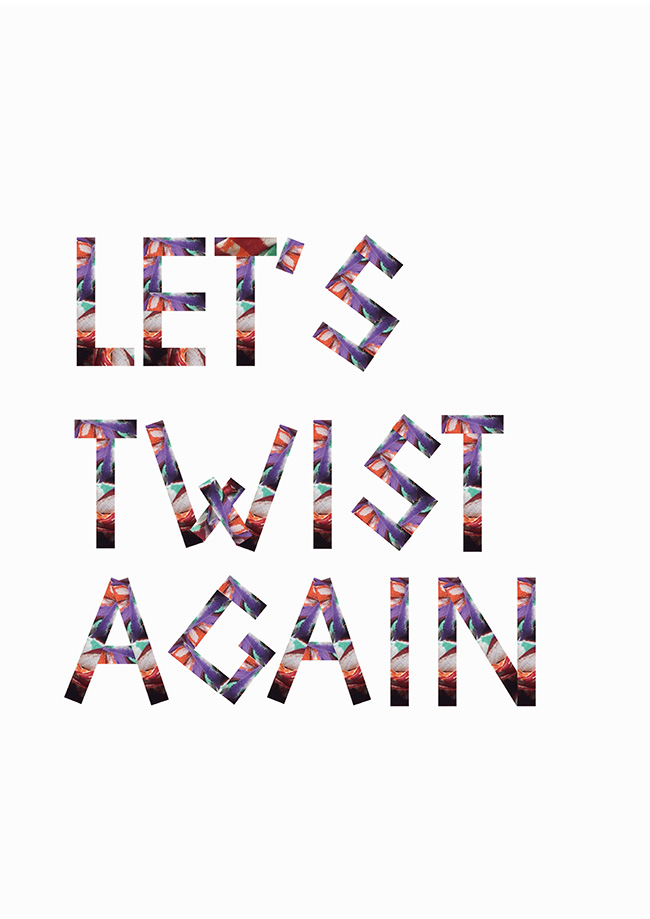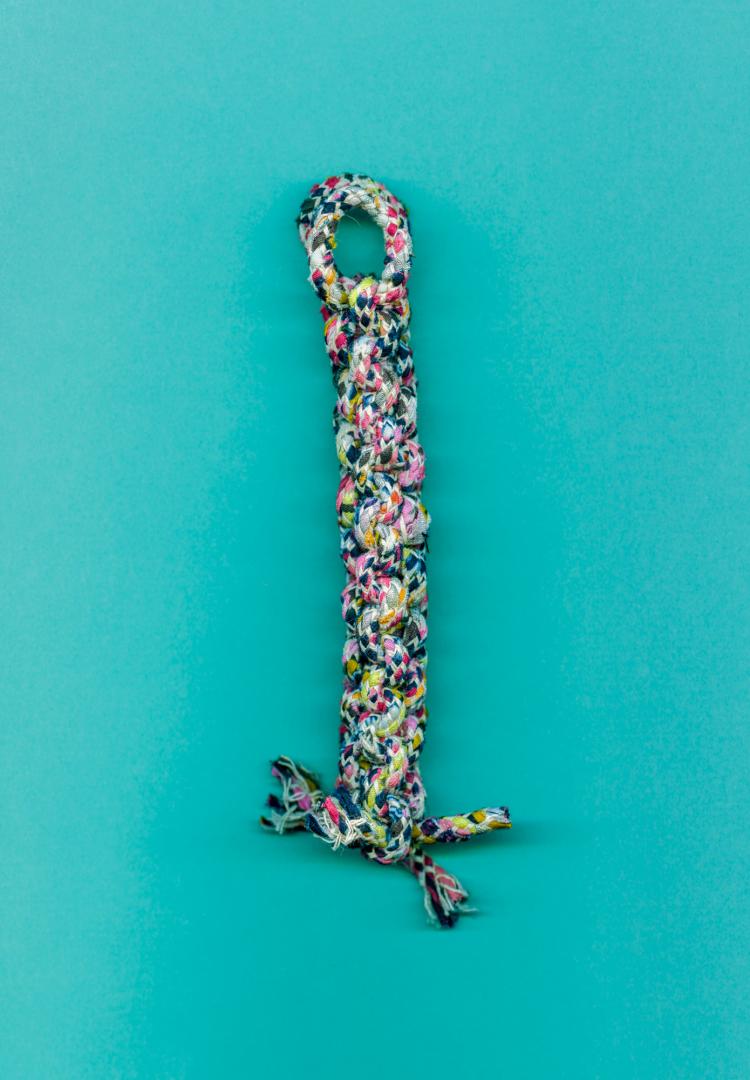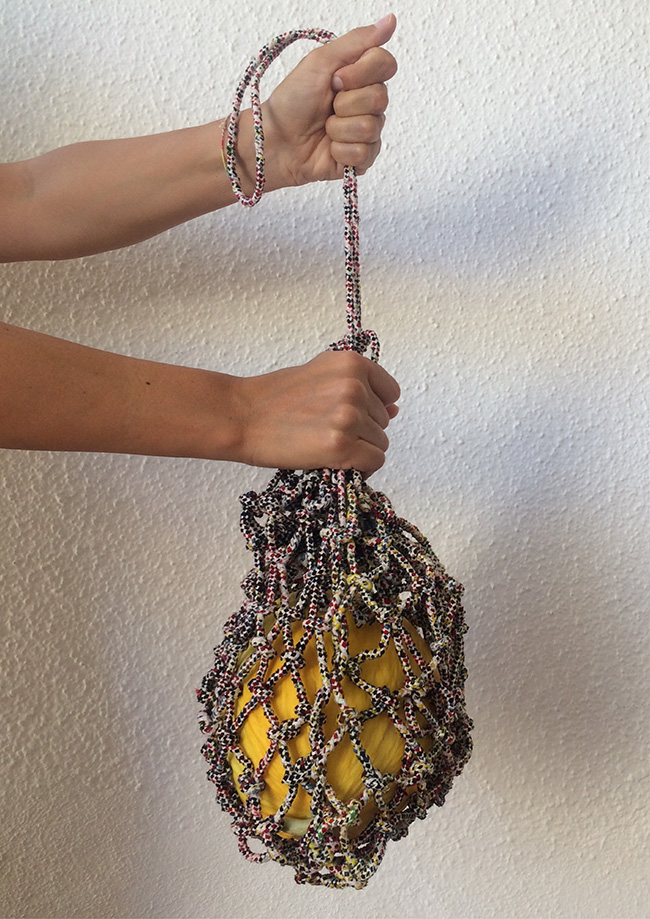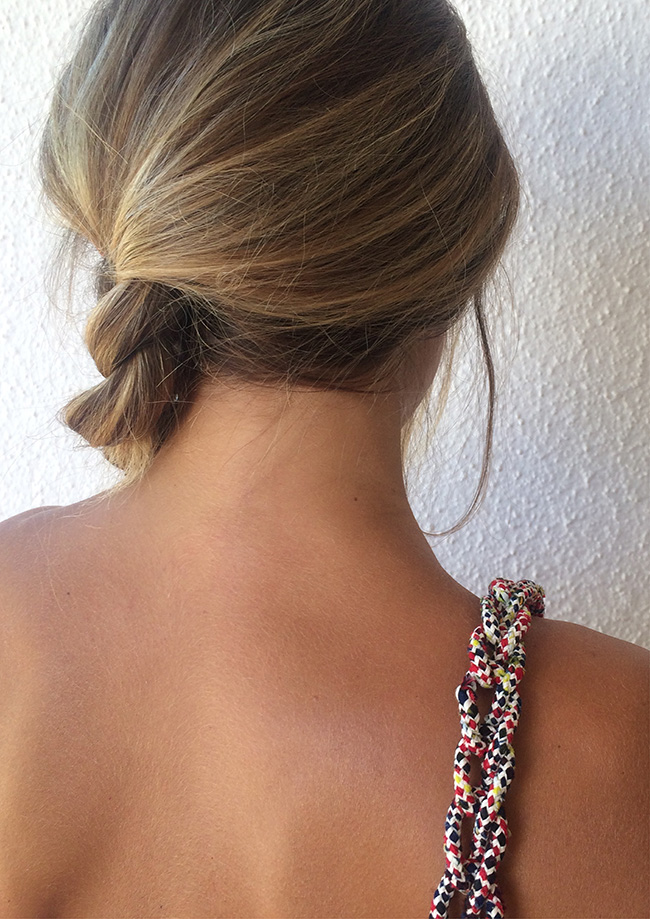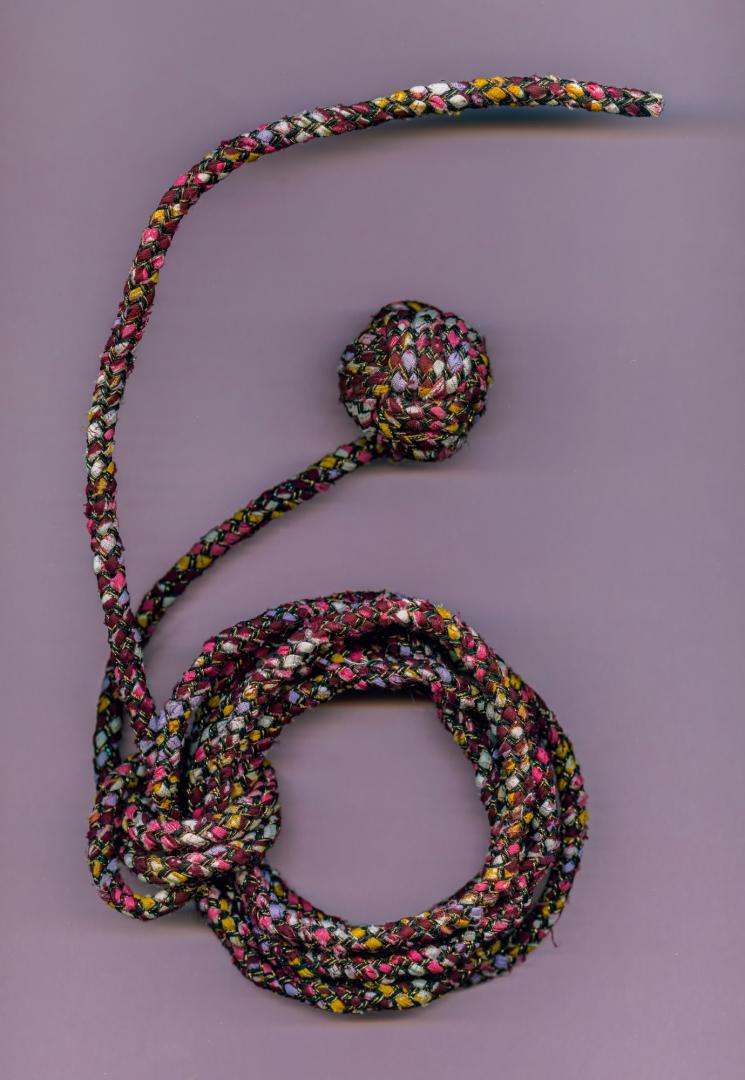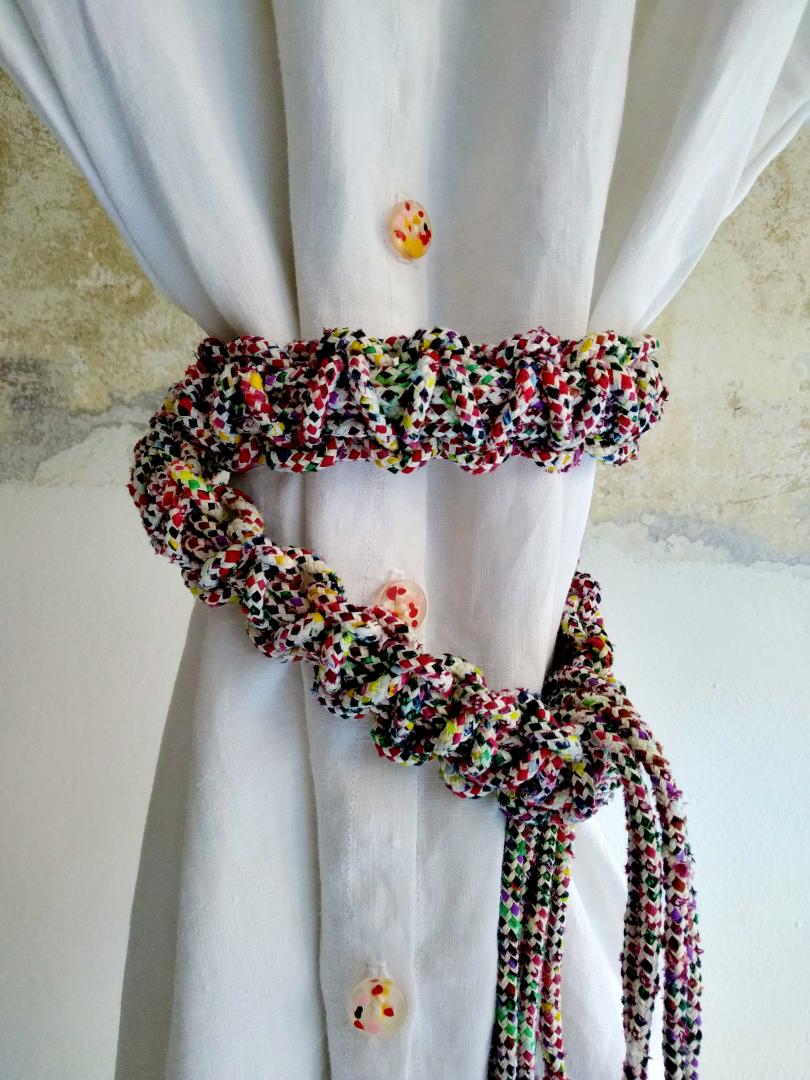Let's Twist Again
Basic information
Project Title
Full project title
Category
Project Description
LET'S TWIST AGAIN turns industrial textile production waste into crafted up-cycled ropes for fashion.
This project started in the 2018, during an Erasmus+ internship, in the VLISCO company, where I had the opportunity to deepen my observation on industrial textile production.
Tuned with the contemporary trends, the project reinvents the approach in the choice of raw materials, combined with the use of an old machine of rope braiding, taking the up-cycling technique to another level.
Project Region
EU Programme or fund
Description of the project
Summary
LET'S TWIST AGAIN is the result of a highly human content story about resilience and collaboration, born from the encounter of different people whose synergy was essential to its development.
This project started in the VLISCO company, located in a small village in the Netherlands.
In 2018, I had the opportunity to join the creative department, during an Erasmus+ internship, which allowed me to deepen my observation on industrial textile production.
Inspired by the regenerated fiber process, I started to think about the possibility of a up-cycled yarn, starting with textile waste from the Dutch company's production: let's twist again started to take shape.
I dedicated the first part of the research to the exploration of the material, through a real dissection of the fabrics. During this first phase, I decomposed these printed, colorful and emblematic waxprint fabrics, experimenting manually with the creation of yarns, revealing their potential and limits.
In order to reduce the impact of transport and logistics, in the evolution of the research, I tried to create a network of professional partners able to represent the European textile know-how (suppliers of recycled materials, production), in a reduced geographical area, close to the VLISCO factory.
I worked with the staff of the Textiel Lab in the TEXTIEL Museum and the ladies of the shelter centre VINCENTIUS in Tilburg, the Netherlands, whose support was crucial to the development of the project.
In the Textiel Lab's Passement department, I was able to test a mix of materials on an antique braiding machine, developing a collection series of fancy ropes.
Key objectives for sustainability
Textiles are the fourth highest-pressure category for the use of primary raw materials and water, after food, housing and transport, and the fifth highest for greenhouse gas emissions.
It is estimated that, nowadays, less than 1% of all textiles in the world are recycled into new textiles.
The Fast Fashion system has invaded the entire fashion industry (including high fashion), imposing its frenetic pace of production. This has led to the creation of a continuous flow of textile products that often do not even reach their final destination, the consumer.
Faced with the current market rules, this hyper-accelerated production has literally become a generator of waste to be processed: the confidential destruction of unsold goods is proof of this. Such 'waste' actually represents the dispersion of precious energy and resources: like hidden treasures, it holds valuable potential for the development of new aesthetic frontiers and interesting economic opportunities.
This project is a concrete solution to the valorization of textile waste, in relation to the new action plan for the circular economy European Parliament resolution of 10 February 2021 on the new action plan for the circular economy (2020/2077(INI)).
LET'S TWIST AGAIN highlights the need to focus on waste prevention and sustainability, reducing the carbon and environmental footprint, up-cycling durable leftovers, enhancing sorting through innovation, encouraging industrial actors to think about alternatives to confidential destruction, focusing on extended producer responsibility.
Through the decomposition of the material, I symbolically revealed the complexity of industrial production which, despite the advent of new technologies, cannot do without the expertise of the hands and eyes of skilled men and women.
Today more than ever, thinking about the impact of a product's life cycle on the environment must be integrated into all stages of production, starting with its design.
Key objectives for aesthetics and quality
The manufacturing process of VLISCO fabrics is as fascinating as complex: each meter of printed fabric requires 27 different processing steps.
In order to guarantee a high standard of quality, parts of the fabric with irregularities are removed from the production process.
I decided to start my research by up-cycling these scraps.
In order to be able to use these scraps, the company sets two conditions: the production defects must not be visible in the new up-cycled products and must not interfere with the range of products sold by the company.
The increasing delocalization of the textile industry has not only relocate production, but also technical know-how and craftsmanship, which have gradually lost adepts.
Up-cycling includes the performance of value added activity on the material or disassembled garment in such a way as to create a product of higher quality or value than the original.
Leaving the obsolete path of traditional production, I ventured into unknown territories, discovering old skills, re-evaluating the old technique of rope weaving and innovating the technique of up-cycling and takes it to another level.
Tuned with the contemporary trends using up-cycling in fashion couture, the project brings out a new creative solution through a new and attractive aesthetic.
This innovative aesthetic tells about a vast and complex universe that is part of a major change within the fashion industry, aware that a new direction is needed.
This change will have to be integrated in all its various phases, bringing new aesthetics, depending on the use of more eco-sustainable techniques and materials.
It is patchwork or terrazzo patterns and styles, typical of the disassembly and reassembly of materials that are spreading, with a power to raise awareness, heralding change and facilitating its spread among the public.
Key objectives for inclusion
Upcycling plays a major role in the sustainability criteria of the economic, environmental and social dimensions.
For the fashion industry, upcycling contributes to life cycle extension through the reuse of materials and finished garments with a consequent reduction of textile waste.
It is a complex technique, requiring a considerable amount of work to dismantle the original fabrics. In most cases, upcycling involves manual processing. This processing phase is an opportunity for professional integration.
LET'S TWIST AGAIN, with its rope creation, also requires a craft phase of preparation. The craftsmanship and skills of the ladies from the VINCENTIUS shelter in Tilburg contributed significantly to the development of the project.
Results in relation to category
The pandemic impacted on the project's visibility, slowing down its development.
Nevertheless, LET'S TWIST AGAIN has achieved some acknowledgements and continues to evolve.
23rd June - 05th October 2020 _ DESIGN.S International Student Design Biennial _ Brno (Czech Republic)
27th August - 29th August 2020 _ Graduation Show at MAD Home of creators _ Bruxelles (Belgium)
21th - 27th September 2020 _ FITE Festival _ Clérmont Férrand (France)
30th January - 06th February _ The mirror & the lamp | Exposition des lauréat.e.s 2020 _ Brussels (Belgium)
07th February - 07th March 2020 _ Prix Tremplin/BeCraft _ Mons (Belgium)
24th April - 21th October _ ARTIVISM _ Fashion Revolution Italia / Cittadellarte Fondazione Pistoletto
How Citizens benefit
LET'S TWIST AGAIN was inspired from the Transition Towns Network.
Founded in 2004 by Rob Hopkins, it is an autonomous social movement that proposes a transition initiative, engaging the community in rethinking the societal system in its different aspects.
The main goal is to ensure the capacity of the social group to respond to the crisis caused by large-scale industrialization with its relocation of activities and its out-of-control resource exploitation system and the consequent impact on local economies and climate change.
A resilient approach to the problem aims to build human capacity to cope with sudden and unexpected changes.
I believe that awareness raising accompanied by the dissemination of local alternative practices can push communities to change their obsolete consumption practices through more committed and conscious behaviours (e.g. the prevalence of reuse or upcyling practices, or the use of recycling centres to extend the life cycle of products, greater traceability of raw materials, or the creation of products made with recycled or sustainable materials).
Unfortunately, as a consequence of the pandemic, opportunities for sharing with civil society have been particularly restricted.
Ideally, one of the ambitions of the project is to bring the public closer to textile production techniques and handicrafts and to help them discover the complexity of textile production in its various stages and its real value.
Innovative character
When we think of the universe of textiles, we usually think of clothing in its broadest sense.
But the multiple arts and techniques that make up a garment, hidden in the ateliers and production factories, are less well known to the general public.
LET'S TWIST AGAIN highlights and narrates the art of rope weaving. Rope is a ubiquitous element in our daily lives, from shoelaces to sportswear, for example.
Research has led to the development of an innovative technique to allow textile waste to be converted into a new quality raw material.
The current development of some prototypes at the TEXTIEL Lab in TIlburg has shown the aesthetic and multifunctional potential of these ropes, which are proposed as a new solution to the complex issue of textile waste management.

